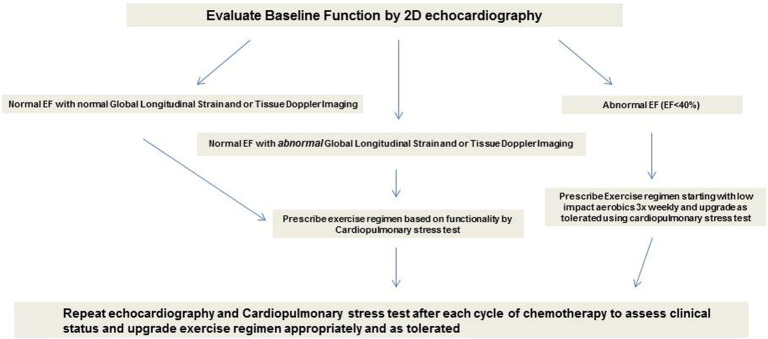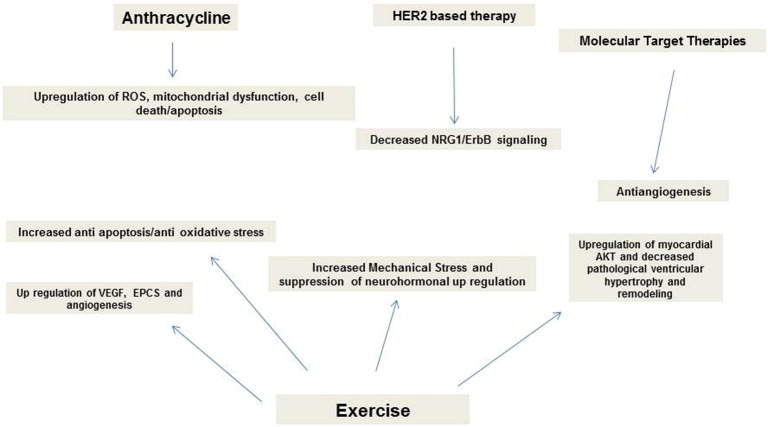Medical therapies in oncology have resulted in better survival resulting in a large population who are at risk of early and late cardiac complications of chemotherapy. Cardiotoxicity related to chemotherapy can manifest decades after treatment with a threefold higher mortality rate as compared to idiopathic dilated cardiomyopathy. The leading cause of death in cancer survivors seems to be cardiac. Early detection and intervention could prevent progression of heart failure to end stage disease requiring advanced therapies such as implantation of ventricular assist devices or cardiac transplantation. This review focuses on the role of exercise in cardioprotection in this population. The current practice of depending on ejection fraction for diagnosis of heart failure is suboptimal to detect subclinical disease. It is also important to diagnose and treat early diastolic dysfunction as this tends to lead to heart failure with preserved ejection fraction. Hence we suggest an algorithm here that is based on using strain rate and tissue Doppler imaging modalities to detect subclinical systolic and diastolic dysfunction. Further research is warranted in terms of defining exercise prescriptions in this population. Human studies with multicenter participation in randomized controlled trials should be done to elucidate the intricacies of aerobic exercise intervention in cardiotoxicity dependent heart failure. It is also necessary to assess the utility of exercise interventions in the different chemotherapeutic regimens as they impact the outcomes.



